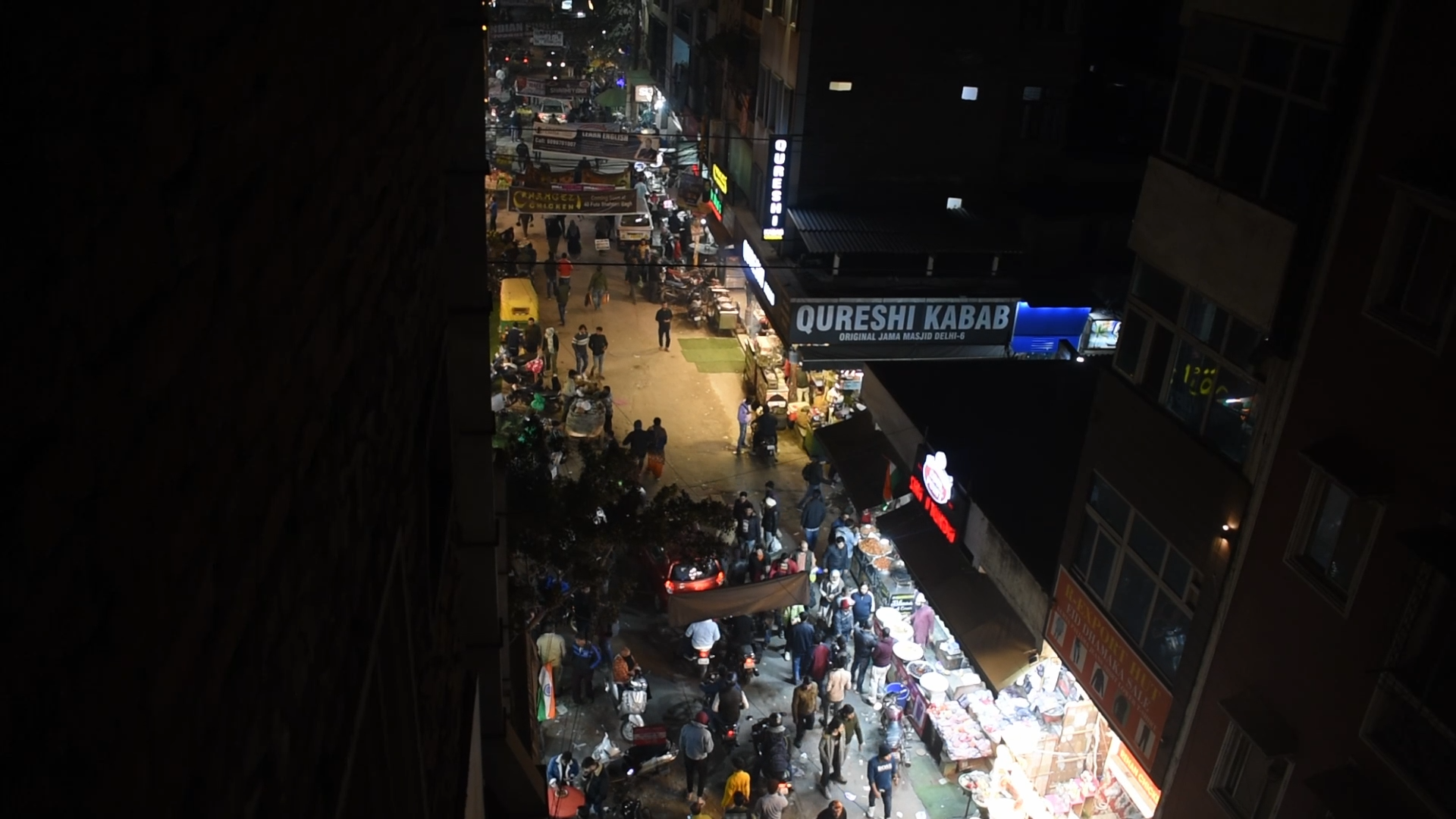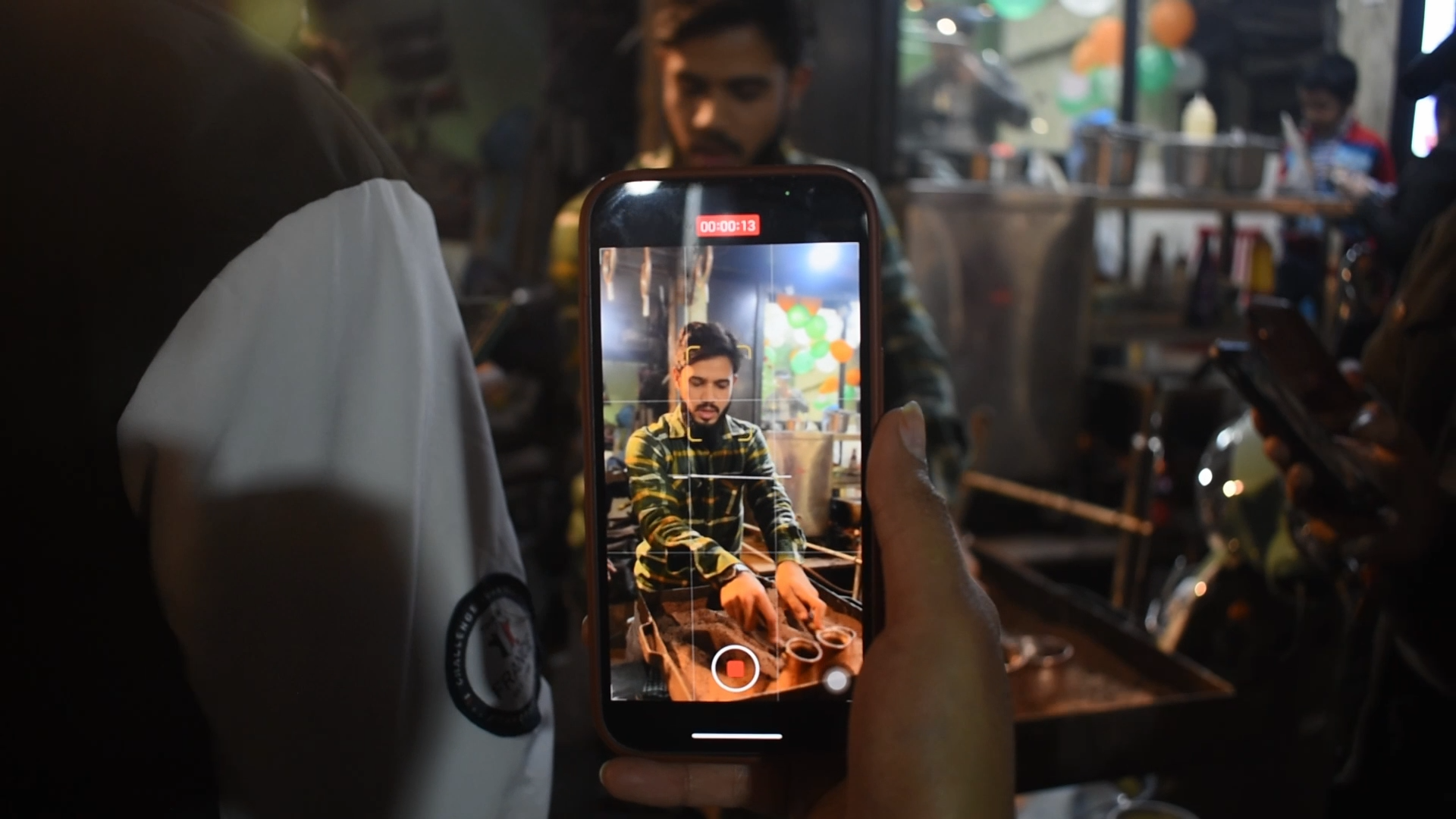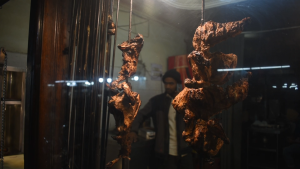Led by food walk curator Saleha Siddiqui, a group of people make their way from one restaurant to another through the crowded streets of Zakir Nagar in southeast New Delhi’s Jamia Nagar. Over a couple of hours, the group tastes several cuisines, and Siddiqui ensures they do not miss out on the diversity of flavors.
The group includes researchers, professors, and some students. Even as they savor the butter chicken at one of the food outlets, they mumble under their breath about the neighborhood’s politics and the associated stereotypes.
“It’s unfortunate that even at food walks we have to speak about the political scenario and the controversies this area is surrounded with,” says Siddiqui, who has been conducting food walks in Jamia Nagar since 2019. People from different parts of Delhi, even out-of-state visitors participate in her food walks.
“The simple way to get rid of the misconceptions and prejudices is food,” she says.
The now sprawling Jamia Nagar was once a village on the banks of River Yamuna. It took its first step toward urbanization about a century ago when the foundation of the Jamia Millia Islamia was laid.
“Jamia Millia Islamia is the product of the Indian nationalist movement and a part of the independence struggle, which the university upholds through its secular spirit,” explained Anugyan Nag, a professor of film and cultural studies at AJK-Mass Communication Research Center, Jamia Millia Islamia.
According to Nag, literally and metaphorically Jamia Nagar and its residents have been on the periphery – of the city and the community too. A predominantly Muslim neighborhood, “it is only in the past 6-7 years because of its eateries and food culture that people are entering Jamia Nagar, realizing it as an interesting place,” said Nag.
To many Delhiites, Jamia Nagar is a locality “they associate with ‘anti-national activities,’” Nag said. Several incidents such as the controversial shoot-out at Batla House in 2008 between police and suspected militants, and protests in 2019 against the discriminatory Citizenship Amendment Act and National Register of Citizens, contributed to the negative perception. But also, “the portrayal of Jamia Nagar in films and the mainstream media has prejudiced public opinion” against this vibrant neighborhood, Nag pointed out.
However, a different perception of Jamia Nagar is emerging slowly but surely, thanks to its food culture.
Locals describe the 2019 anti-CAA protests at Shaheen Bagh and Jamia as trigger points for the development of this subculture. During the protests, people – mainly women – sat out in the open through the cold winter nights to protest peacefully against the controversial citizenship law. Hamza Khan, a hospitality professional and Jamia Nagar resident recalled that “people would hang out late at night at the CAA-NRC protest site. They needed to eat. Lots of food joints came up back then and grew later.”
After the COVID-19 pandemic and subsequent lockdowns, the streets of Jamia Nagar saw a new life in food. Food outlets cropped up across Tikona Park, Zakir Nagar, Shaheen Bagh, and some old big names in the eatery business established their branches here. Restaurants that had earlier catered to the local residents were now visible to a much larger audience.

An overhead shot of the 40-Foota-Road in Shaheen Bagh, New Delhi, India. Photo by Syed Ahmad Rufai and Sabika Syed.
If in the past, Jamia Nagar and Shaheen Bagh were in the news for anti-government protests, food is the new reason why this neighborhood is now going viral. Shaheen Bagh’s “40-Foota-Road” has become the hotspot for food lovers.
Khan, the hospitality professional, has started food vlogging about the streets of Jamia Nagar. He has a social media base of around 42,000 followers and travels across India to explore different cuisines.
Siddiqui, the food walk curator, points out that the influx of migrants from different parts of the country adds to the cultural diversity of this neighborhood, which is reflected in the food. “You will see many Kashmiris here during the winter season, numerous people from Uttar Pradesh and Bihar,” she pointed out. With such diversity and people from different cultures coming together from several states, “it has become a melting pot.”
Many food outlets have sprung up across Jamia Nagar catering to the many identities and cultures of people residing here. The pocket-friendly prices as well as the variety available have added to the ever-growing attractiveness of the food culture in Jamia Nagar.
“Everyone likes to showcase their culture but they also want food that isn’t heavy on the pocket,” Siddiqui noted.
Areas like Old Delhi have monuments as an added attraction, while Lajpat Nagar and Jangpura have markets. However, according to Khan, Jamia Nagar’s sole attraction is its food. The food for which you’d travel to Old Delhi is available in Jamia Nagar now.
Jamia’s street food culture has brought awareness about other cultures and traditions. “Food is what brings people together and eventually promotes coexistence,” Siddiqui said.

A person captures a Turkish coffee maker on his mobile phone in Shaheen Bagh, New Delhi, India. Credit: Syed Ahmad Rufai and Sabika Syed
According to Rituparna Patgiri, a sociologist whose work revolves around food, if the vilification of marginalized communities is done through their food cultures, then the community’s assertion will be through food too.
“Communities who have been historically marginalized, their first inroad into a new space is food,” Patgiri said. “That is also how they subvert popularly held ideas and stereotypes held against them.”
Stereotypical beliefs, prejudices, and biases about Jamia Nagar were deeply engraved in the mind of Aditya Joshi (name changed for confidentiality reasons), a non-Muslim who studies at Jamia Millia Islamia. “When I secured admission to the university, I had apprehensions regarding the university as well as the locality around it,” he said.
Joshi said that representations in the mainstream media of Jamia Nagar had contributed to his perception of the neighborhood as being a closed and polarized space that wasn’t open to other people and their cultures. “It was only after I went to Shaheen Bagh with my Muslim friend that I realized the place and people are friendly, not hostile,” he said.
“Due to the vlogs and food walks around the locality, people now feel that the area is safe for them,” asserted Khan. “When people started visiting this locality and its streets, they felt safe, not how it is depicted in the media.”
Siddiqui echoed that sentiment. “When women visiting the area interact with the locals, I saw their inhibitions about Jamia Nagar not being a safe place for women and their stereotypes being washed away.”
Food vloggers in the area share that Jamia Nagar is welcoming to new cultures and people. A few Afghani and Lebanese eateries, started by refugees, have become immensely popular.
Due to social media algorithms, especially on Instagram, posts and vlogs related to Shaheen Bagh are trending and have become viral. A few of Khan’s videos with the Shaheen Bagh hashtag have become viral. He shared that people from outside Delhi plan their entire trip around the food walks in Jamia Nagar.
Several celebrities including cricketer Suresh Raina and stand-up comedian Munawar Farooqi have visited Jamia Nagar’s eateries of late, drawing others to visit as well.
While Joshi admits that the street food cultures are opening people’s minds to the Muslim community, it might not drastically change the popularly held perceptions. “Food is a great medium for people to come together, but people need to be open-minded,” he said.
Regardless of the growth of this subculture, Joshi says he continues to experience difficulties when he travels to the university. “Even today, autorickshaw drivers refuse to enter the college – they don’t move beyond the metro station,” he said.
“Even if the image of Jamia Nagar is changing through food, the negative image that has been constructed already is strong. Another truer image of Jamia Nagar has to be created,” Joshi concluded.

































